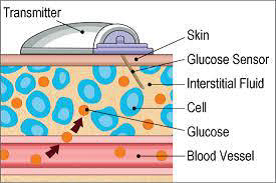Search

News & Events
Ten Day Continuous Glucose Monitoring study – now recruitingThe Children’s Diabetes Centre is now recruiting for a new continuous glucose monitoring study.

News & Events
Camp volunteers neededDiabetes WA is looking for volunteers to take part in the PMH and Diabetes WA Camp for 9 and 10 year olds in Hillarys in September.

News & Events
Farewell TariniAfter nearly two-and-a-half years in sunny Perth, Dr Tarini Chetty is headed back home to Scotland. Before she departs our shores.

News & Events
ENDIA milestoneThe ENDIA study — Australia’s largest study into the causes of Type 1 Diabetes— reached a significant milestone when it recruited its 700th patient in Perth.
The Rio Tinto Children’s Diabetes Centre; a Breakthrough T1D Centre of Excellence at The Kids Research Institute Australia and Perth Children’s Hospital (PCH), is a global hub for research into type 1 diabetes (T1D) in children.
Find newsletters, guidelines, publications and videos in the one spot.
Research
A preliminary study of fetal head circumference growth in Autism Spectrum DisorderFetal head circumference (HC) growth was examined prospectively in children with autism spectrum disorder (ASD).
Research
Polymorphisms associated with normal memory variation also affect memory impairment in schizophreniaNeurocognitive dysfunction is a core feature of schizophrenia with particularly prominent deficits in verbal episodic memory.
Research
The role of GSTP1 polymorphisms and tobacco smoke exposure in children with acute asthmaThe glutathione S-transferase enzymes (GSTs) play an important role in the detoxification of environmental tobacco smoke (ETS), which contributes to airway infl
Research
Topical 1,25-dihydroxyvitamin D3 subverts the priming ability of draining lymph node dendritic cellsThe active form of vitamin D, 1,25-hydroxyvitamin D(3) [1,25(OH)(2)D(3)] is produced in skin following exposure to sunlight
